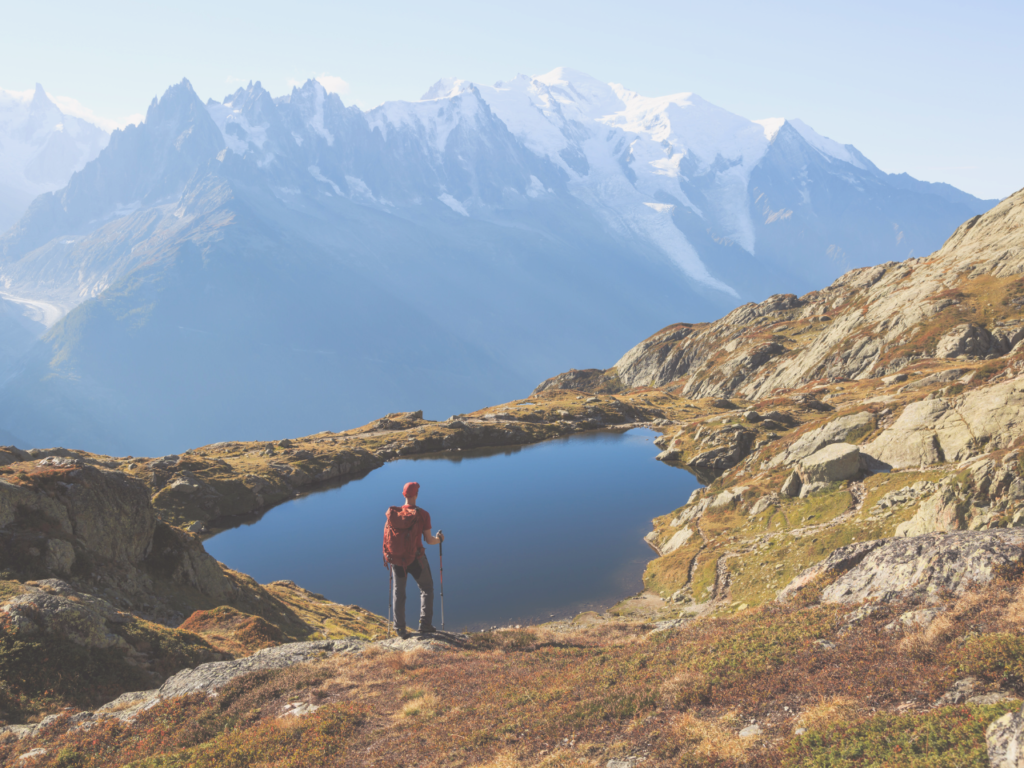The Tour du Mont Blanc (TMB) is a renowned trekking circuit that offers adventurers a breathtaking journey through the Alps, crossing three countries: France, Italy, and Switzerland. This guide covers the essentials for planning an unforgettable TMB adventure, including the best times to visit, routes to explore, and essential packing tips. Whether you’re a seasoned hiker or a beginner, this guide will help you prepare for an incredible experience on the Tour du Mont Blanc.
What is the Tour du Mont Blanc?
The Tour du Mont Blanc (TMB) is a famous trekking circuit that encircles the Mont Blanc massif, which stands at 4,808 meters, making it one of the highest peaks in the Alps. The trail offers stunning views, diverse landscapes, and cultural experiences as it passes through France, Italy, and Switzerland. Each section of the trail presents unique challenges and rewards, making it a must-do for outdoor enthusiasts.
Why is it an Unforgettable Adventure?
The TMB is unforgettable due to its stunning landscapes, from alpine meadows and rugged mountain passes to picturesque villages and breathtaking vistas. Hikers are treated to a variety of environments, wildlife, and cultural experiences, all while enjoying the camaraderie of fellow trekkers.
What Makes the Tour du Mont Blanc Unique?
The TMB stands out for its combination of challenging trails and diverse routes that cater to different skill levels. The trek offers hikers the chance to experience the natural beauty of the Alps while immersing themselves in the local cultures of the regions they pass through. Highlights include iconic spots like Val Ferret, Col du Bonhomme, and Col de la Seigne, as well as encounters with local wildlife and charming villages.
When is the Best Time to Go?
The best time to hike the TMB is from late June to mid-September. During these months, the weather is generally stable, the trails are clear of snow, and the alpine meadows are in full bloom. These conditions make it ideal for hikers of all levels.
How Long Does it Take to Complete the Tour du Mont Blanc?
The TMB typically takes 10 to 12 days to complete, depending on the route chosen and the hiker’s pace. The average daily distance is about 15 kilometers, with significant elevation gains, making it a challenging yet achievable adventure.
What are the Different Routes for the Tour du Mont Blanc?
The TMB offers several routes, with the most popular being the Classic Route and the Alternate Route. The Classic Route is favored for its accessibility and well-marked trails, offering stunning views and a comprehensive experience of the Mont Blanc region. The Alternate Route provides a more remote and less crowded experience, exploring lesser-known paths and hidden gems.
Classic Route
The Classic Route is the most popular, offering a well-established path with iconic highlights like La Fouly, La Flégère, and the Grandes Jorasses. It’s accessible and suitable for a wide range of skill levels, making it a top choice for many trekkers.
Alternate Route
The Alternate Route offers a quieter and more adventurous experience, taking hikers through less-traveled paths and providing unique landscapes and stunning vistas. This route is ideal for those seeking a more secluded experience.
Essential Packing Tips for the Tour du Mont Blanc
Packing for the TMB requires careful consideration of essential items to ensure a comfortable and safe trekking experience. Here are key items to include:
Clothing
- Layered Clothing: Use moisture-wicking base layers, insulating mid-layers (like fleece), and a waterproof outer layer to adapt to varying weather conditions.
- Hiking Pants: Quick-drying and comfortable for long hikes.
- Accessories: Warm hat, gloves, and moisture-wicking socks are essential for comfort.
Gear
- Trekking Poles: Provide stability and reduce strain on your knees.
- Hydration System: Stay hydrated with a hydration pack or reusable water bottles.
- First Aid Kit: Essential for addressing minor injuries on the trail.
Additional Items
- Snacks: High-energy snacks for sustained energy.
- Travel Insurance: For peace of mind in case of emergencies.
- Camera: To capture the stunning views.
Physical Requirements and Preparation
The TMB is physically demanding, requiring a good level of fitness and stamina. Preparation is key to ensuring a successful trek.
Training
- Endurance and Strength Training: Regular hiking, cardiovascular workouts, and elevation training are essential.
- Elevation Preparation: Practice hiking at altitude or use stair-climbing exercises to simulate conditions.
Acclimatization Tips
- Hydration: Drink plenty of water, aiming for at least 3 liters daily.
- Gradual Ascents: Allow your body to adjust by taking it slow and steady.
- Rest Days: Incorporate rest days into your itinerary to aid acclimatization.
Must-See Sights on the Tour du Mont Blanc
The TMB is full of must-see sights, including:
- Aiguille du Midi: Offers stunning panoramic views.
- Mountain Huts: Experience the charm and hospitality of the Alps.
- Mont Blanc Massif: Enjoy breathtaking views of Europe’s highest peak.
Safety Tips for a Memorable Experience
For a safe and enjoyable TMB adventure, keep these tips in mind:
- Check Weather Conditions: Always stay informed about the weather.
- Follow Marked Trails: Stick to the trails to avoid getting lost.
- Stay Hydrated: Drink plenty of water and take regular breaks.
Frequently Asked Questions
- When is the best time to hike the TMB?
- Late June to mid-September offers the best conditions.
- How long does the TMB take to complete?
- It typically takes 10-12 days.
- What should I pack?
- Essentials include hiking boots, layered clothing, a first aid kit, and plenty of water and snacks.
- Do I need to be an experienced hiker?
- While experience is beneficial, the TMB is accessible to hikers of all levels with adequate preparation.
- What safety precautions should I take?
- Follow marked trails, stay hydrated, check the weather, and inform someone of your itinerary.
- What are must-see sights on the TMB?
- Aiguille du Midi, Mer de Glace glacier, Lac Blanc, and Val Ferret valley are among the top highlights.
READ MORE EUROPEAN ADVENTURE TRAVEL GUIDES
